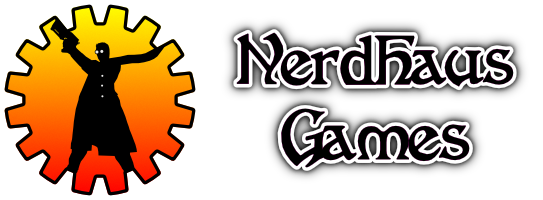My last session was discussed here.
Horror is a very tricky thing at the game table. I’ve been wrestling with that mood since 2nd Edition Ravenloft. The players aren’t in the same situation as their characters. They have knowledge the PCs don’t and player characters by definition are better prepared to handle these situations than your usual horror protagonists. Plus, control over the environment to reinforce the unease, or descriptions that put you there, can too easily veer off into cheesy gimmicks that pull you out and insulate you from what’s happening. Horror, in my opinion, is best reinforced by a rules system that puts you there, ratchets up that tension and helplessness, and keeps things unpredictable.
How do I love Dread? Let me count the ways. As a system, it does pretty much everything I want a horror game to do: flexible character creation (in a novel fashion!), very loose resolution mechanics to get out of the way of the story, and a truly unpredictable outcome that keeps everyone on their toes, sometimes literally. The resolution mechanic doesn’t involve dice, but Jenga. When players want to assert control over the narration, they have to make one or more pulls on the tower. If it collapses, they die. Now you know enough to play Dread.
I’m not really joking. If the tower collapses, you either die outright (if the circumstances warrant) or you snap and can’t meaningfully contribute and make future pulls. You are effectively dead, but can keep playing to bog the party down, get pulled around by the narrative, and generally complicate everyone’s lives. The third option is you can perform a noble sacrifice and knock the tower down on purpose, achieving your action and going out in a blaze of glory.
The extra delicious part of Dread is character creation. The GM writes up questionnaires for each character, naming them via archetype. The questions lead the players to answer important facets of their character. Maybe the Academic has the question “Why was your last publication mired in scandal, and why do you blame the Archeologist for that?” Perhaps the Police Officer has “Before the Outbreak, why were you on probation with the force? Who in the party knows about it?” Maybe the Precocious Child has “What impossible thing have you discovered you can do, and why haven’t you told anyone?” These questions are opportunities for GMs to plant plot points, connections between other characters, and outsource some of the imagery or tension to your players with questions like “What about the Beast most haunts your dreams?” Super clever, and can be adapted to other games’ character creation with a bit of work.
The session I was a part of at the convention was a sci-fi thriller with the crew of a mining vessel drawn to an unusual signal on a moon orbiting Uranus. We went to explore, building tensions and making draws to get into the facility, decode distress signals, check the atmosphere; the usual “salvage team in an obviously haunted environment” routine. Tension mounted both as a function of the storytelling and the decreasing integrity of the Jenga tower. By the time some of us discovered a geometrically impossible floating presence in the mining area, we were prepped for something Bad Weird.
Bad Weird ended up being the crew of the ship coming unmoored in time, popping up in traumatic circumstances that were common to a couple crew members at a time (and described in greater detail by the players in their questionnaire) where we had to face our collective demons. One was a riot and massacre (possibly zombie-themed) on Mars that defined about half of us and the other was the loss of a ship in our convoy a number of years prior that cost us a number of friends and family. Because we had defined our relationships to these events, it was very personal getting to explore them up close.
It ended up being a really powerful session with one tower collapse/death, a noble sacrifice from our shell-shocked captain who never really recovered from reliving his nightmare. He realized his sacrifice could get the rest of us out of a tight spot at the end. Big science fiction questions, big drama, lots of great character stuff from the whole table. A highlight of the con, some of which is a fluke of who showed up, and lot of which is a testament to the strength of the system and the session our GM oversaw.
To that end, I’d like to announce that a collaboration with our Dread gamemaster, Matt Harrop. He has played in my sessions, and I in his, and we have discussed our mutual love of horror gaming and one-shots. So I will be hosting downloadable pdf versions of his Dread modules here on the site. I heartily recommend Dread as an accessible rpg, both for first time players and also for more mechanics-heavy gamers who might want to try something lighter and more story-based, but without a lot of the shared-story everyone’s-the-author hand-waving that commonly turns them off from games like Fiasco or Ten Candles. There’s no better place to start exploring Dread than with Matt’s games. It’s how I fell in love with the system and I think you will, too.

One thought on “KantCon 2018, Pt. 5 (Dread)”
Comments are closed.